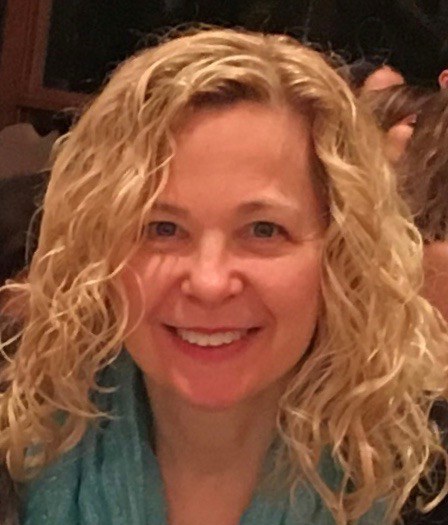- Home
- Rokdim Nirkoda 109
- A Brilliant Choreographer and So Much More
Years before I met Moshe Eskayo, I think I loved him. There was something about the dances he choreographed – the way he heard (or FELT) the music, and then invented steps to sit on it – that was different than anyone else. Moshe took chances and choreographed dances to music that no one else dared to use, with challenging steps and syncopation that no one else dared to imagine. Moshe’s dances amazed me as a new dancer, and many decades later, they still do.
Moshe spent nearly 60 of his 90 years living in New York City. But even when he was living in the U.S., Israeli dance and Israel were always a big part of his work and daily life.
In 1963, he served as the Director of Culture at the Israel Pavilion at the 1963-64 World’s Fair in New York. Then he opened a dance studio on Broadway, where he offered classes in Israeli dancing, as well as directing and creating choreographies for a performing troupe, The Sadot Dancers. They performed to live music, with Moshe often playing the “tof” for their shows. A shy Moshe and his “Sadot” Dancers introduced many Americans to Israeli dancing on the popular Mike Douglas TV show in 1971. View the video on YouTube.
A great many of Moshe’s dances have become core-repertoire dances in sessions in Israel and throughout the world. Although Moshe created a number of wonderful horas/circle dances like Bakramim, Sapari and Ha’ir Be’Afor and classic couple dances such as Livavtini, Na’arah and Ilu Tziporim, in my mind his trademark dance style was the debka. Debka Ramot, Debka Gid, Tagidi, Debka Chaim… the list of incredible debkas goes on and on. Moshe’s debkas are the kind of dances that make you stop your conversation mid-sentence and run to the dance floor!
Moshe once told me that he first developed his love of “debka-worthy music” when he was a young boy growing up in Jerusalem. In the home where he lived, they could only receive one radio station, and that one played Arabic music. The rhythms and instruments he heard in that music sparked something inside Moshe’s soul that stayed with him throughout his life and eventually became the basis for many dances that he would create.
Moshe believed that dancing the correct steps with appropriate ‘style’ was important. He actually taught an eight-week class to learn the steps and styling for his dance Shir Ha’Chatuna! And if by chance you danced Livavtini with him, and in the very last part, mistakenly took three steps instead of two (as most people do), you would get an earful!
Although Moshe did not love when he saw people dancing debkas in the style of a hora, he understood that Rikudei Am (literally “dances of the people”) change by their nature with different dancers and different sessions. He was once quoted as saying, “Until I teach a dance, it belongs to me. Afterwards, it belongs to everyone.”
Besides his incredible dances, Moshe contributed so much more to the Israeli dance community. He helped organize and direct a number of different dance camps that brought dancers together from all over the world to meet, dance, and have a wonderful time together. Hora, Hora Shalom, Hora Keff, Sababa, and IFC (International) were among his major camps, and of course he was invited to teach at almost every other camp in the world as well.
He also created LPs (records) and then CDs of Israeli dance music, which made life so much easier for Markidim to program an evening of dancing, and so much fun for dancers to be able to easily hear their favorite dance songs whenever they wanted.
I was one of the lucky people who got to know Moshe not only as a choreographer, but also as a friend. We’d talk for hours and hours about everything and nothing (a specialty of his).
Moshe was brilliant, wacky, caring, hysterical, handsome, ridiculous, sensitive, devilish, creative, silly, inspiring, bizarre, shy, charismatic, childish (in a good way) and super fun. But I was far from alone in calling Moshe my friend. As a regular participant at local Harkadot and camps, in Manhattan, Long Island, Teaneck NJ, Boston and Philadelphia, EVERYBODY knew Moshe, and he knew everybody – even if he sometimes called them “Shoshana” or “Heskel.” He danced with us, taught us, schmoozed with us and was always playful. He frequently invited people to his home and enjoyed cooking for them and entertaining. Moshe was very generous and always had a spare bed for someone visiting The City.
Moshe’s personality was filled with eccentric, hilarious and unpredictable antics that made things fun before, during and after dance sessions. We all became accustomed to his cracking jokes and making silly faces or gestures while at dancing.
At a restaurant you’d find him flipping cups on their saucers (they broke about 25% of the time) and saying strange things in multiple languages to the waitresses. Or, maybe he was giving you a ride and suddenly would jump out of his car in the middle of Times Square to ask a random stranger some bizarre question. You never knew what Moshe might do or say, but you always knew it would be funny!!
Of course, Moshe’s most famous ‘shtick’ was performing his “Shoemaker” routine with two unsuspecting souls (soles?) who had no idea how helpless they would be to Moshe’s quick reflexes and clever mind. Here’s one example.
I witnessed Moshe’s Shoemaker routine dozens and dozens of times, but it never got old and always made me laugh and wonder how he did it! Even at 88 years old during his going away party in New York, Moshe could not be beat as the shoemaker.
Debka Keff (perhaps my favorite dance ever) and Shir Ha’Chatuna are dances I will especially remember and cherish doing together with him, but so many of his dances will forever be in my soul.
I know Moshe believed dancers liked his dances, but I don’t think he had a clue what a difference he made to a such a large number of us. He would undoubtedly be shocked by all the tributes and loving messages that were shared over social media since his passing. Personally, I loved dancing with him. I loved dancing next to him. I loved when he was at a dance session or camp sitting on the side and schmoozing. I loved eating his shakshuka and watching his joy in cooking and serving it.
It’s hard to imagine our world without Moshe Eskayo. He left his mark on so many of us, and his legacy includes the magnificent dances that I hope future generations of Israeli dancers will appreciate.
Creating, having fun and helping others have fun was at Moshe’s center, right next to that incredible sense of rhythm, brilliance, sparkle and warmth. How lucky we were to have had him in our dance community and in our lives. We miss him already, so much.
Here are Moshe’s dances on the Rokdim website. Included are all the dances registered with Rokdim.









Comments
התראות